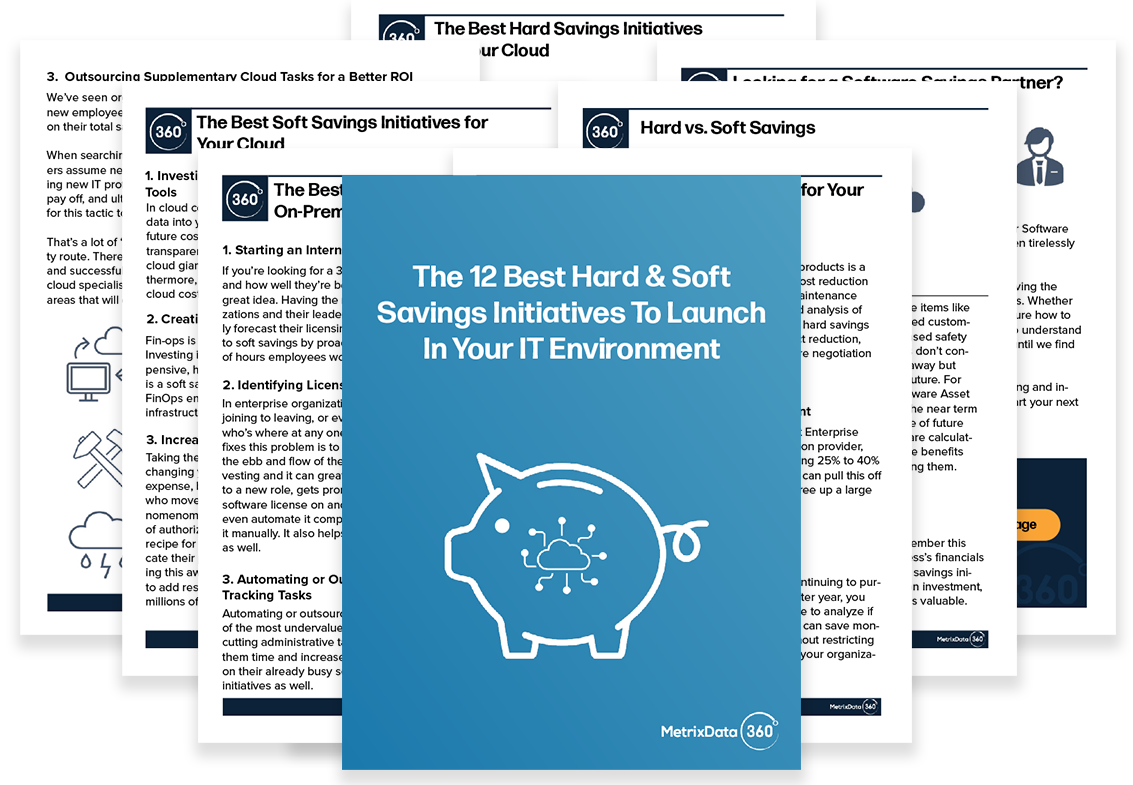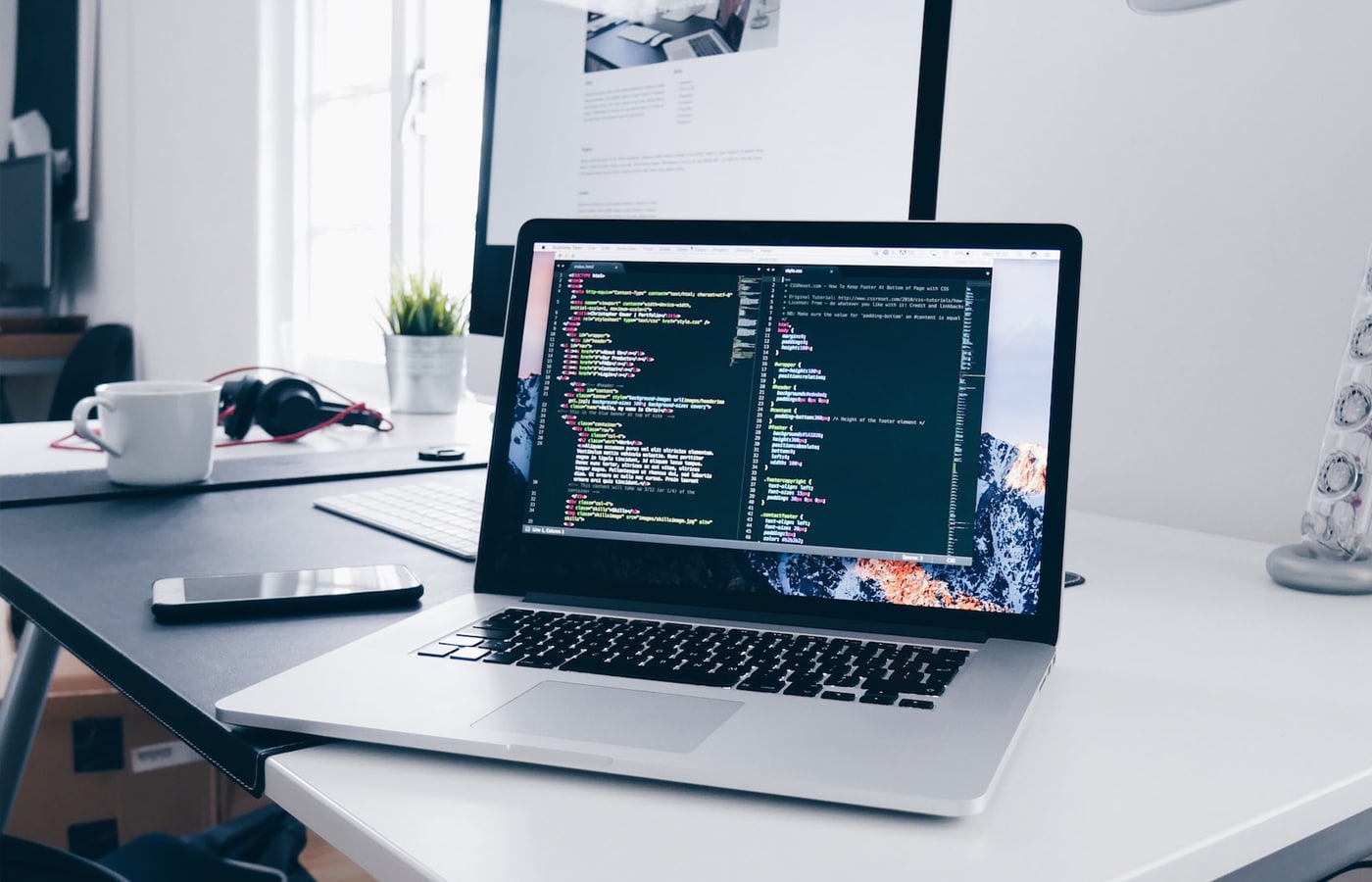Soft Savings vs. Hard Savings in Software Asset Management
Savings are what makes the software asset management world go ‘round; it’s what all the SAM tool vendors preach and it’s one of the main reasons people get into software asset management in the first place. Knowing the difference between hard savings vs. soft savings is an important component to getting the most value for your software dollar.
However, what exactly are you signing up for when you sign a deal with a SAM tool vendor, who is promising ‘savings’ in a high theory sense? What does ‘30% annual savings’ (or whatever your SAM tool vendor promises you) actually look like?
What are the types of savings that you actually see when you successfully implement software asset management?
At MetrixData 360, we are all about transparency and working with our customers to achieve strong tangible results. Here, we’ll look at what type of results you can expect from signing a deal with a SAM tool vendor and exactly what you can expect to save after a SAM implementation by diving into both hard and soft savings.
Hard and Soft Savings Defined
Hard Savings are easily tangible benefits to your bottom line; increased revenue streams and reduced costs. Soft Savings are indirect savings where the company reduces risk and exposure to compliance and legal costs. Watch our video below to see the best hard and soft savings areas we’ve discovered in our client’s IT environments.

See the 12 Best Hards and Soft Savings Areas You Can Target to Save Money In Your Organization.
Download our Hard and Soft Savings PDF for Free:
Hard Savings in Software Asset Management
Hard Savings are an inflow of cash that has a direct relationship to the bottom-line profits or losses. These are things like revenue enhancement (increasing the price of your product) or cost reduction (finding cheaper materials for your product or finding a way to manufacture your product faster).
Some examples of hard savings in SAM include:
Streamlining the Efforts of the IT Department
There are elements of software asset management that can help every area of the IT department, including:
- Asset tracking
- Effective asset disposal and replacement
- Risk mitigation
- Software security
Having an organized software environment means that there is less to manage, less to go searching for, fewer blind spots and less shadow IT that your IT department will constantly be compensating for.
No one is left scrambling to do a year’s job in a matter of months in the event of an audit or true-up. Best of all, IT is given the data they need to advocate for new software or for the replacement of old software.
Related: Want to know how Software Asset Management can create value for the rest of your company? Check out these articles: Partnering CFO and CIO: How to Use Tech to Save Money and How SAM Can Improve Your Cyber Security,
The Real Source of Hard Savings in Software Asset Management
The one area where software asset management can yield real results is in the fact that SAM equips you with the data you need to hand tailor your software contracts to match the specific needs of your software environment.
Without SAM, companies will be forced to guess how many licenses they need to purchase — guessing too high is a waste of money and guessing too low will leave you exposed to the heavy fines of an audit, both scenarios amounting to lost money.
Knowing exactly what you need takes the power out of the software vendor’s hands and levels the playing field, since not having SAM leaves you buying simply what your sales rep has told you to buy. As charming as a sales rep might be, they sit in a position that is adversarial to yours.
They want you to simply buy more while your goals are to buy only what you need to. You need to have your own knowledge to back up your purchases.
Soft Savings in Software Asset Management
Soft Savings are savings found through adding to the bottom-line profits or losses, these are usually intangible and difficult to measure. These are things like improving safety in your workplace to avoid accidents and to conform to new laws as they are passed, since failing to adhere to both can lead to heavy lawsuits.
Increasing employee satisfaction is another type of soft savings since this will lead to fewer people quitting and less time spent hiring and training a constant stream of replacements.
Software Asset Management is rich in soft savings, which is often why it is overlooked by many organizations since soft savings are more difficult to measure. That doesn’t take away from its value, especially when considering the following areas:
Track Arrivals, Movers, and Leavers for Soft Savings
Large organizations are composed of thousands of employees, new hires coming in, long-term employees retiring, or employees getting shuffled around from one department to another.
This constant state of motion must beg the question: what happens to the software of those employees? How can a company hope to keep track and make use of the software licenses that these shuffling employees need without SAM?
It is important to have a process for the purchasing of new software and its retirement, to avoid the repurchasing of licenses and the accumulation of ‘shelfware’ – software that you aren’t using but still paying for.
Software asset management is an excellent way of keeping track of…well, software assets. Although it is important to understand that many Software Asset Management companies with discovery tools to sell will often promise high percentages of saving continuously over several years. They promise this using their discovery tool to find unused licenses and putting them back into your software environment. This can be a way to cut costs if you were already planning on buying more licenses or your contract renewal is approaching, and you plan on cutting those unused licenses out of your contract.
But discovery tools alone will not provide you these types of results, not without software licensing metering (which must already exist in your software environment) to be paired with the discovery tool. You will also need the knowledge to understand the data that the discovery tool will provide you.
However, without the other two elements to this recipe — and paired with the right circumstances — it is unlikely you’ll see such tangible results through the implementation of a single software tool.
A single SAM tool typically only increases visibility into your software environment by 10%, which makes sense when you consider the fact that most SAM tools only give you visibility into a single product or vendor, of which your organization may very easily have dozens.
This is why MetrixData 360 takes the unique approach of creating a holistic view of your data, examining every product throughout your software environment and providing you with our expert’s insights in how to read the data you have been given.
Soft Savings by Avoiding Auditing Penalties
Our clients have come to us in the midst of disaster-level software audits. We’re talking millions of dollars in audit penalties being paid out that they didn’t actually owe. This is because they didn’t have a proper SAM process in place. They didn’t know how to respond to the auditor’s claims because they didn’t have visibility into their software environment.
While having software asset management during an audit in and of itself will not make you money, it could certainly keep you from losing money unnecessarily. Imagine if you could find problems before they incite an audit and you get to avoid the unpleasant process altogether. Going through a software audit successfully is also a great way to demonstrate organization and control to the software vendor, making them less likely to audit you again in the near future (it’s not a magic bullet for software audits but it does help).
Software Asset Management will also cut down on a silent expense of software audits that many companies are not actually aware of until they are in the middle of a software audit: wasted time and resources. Software audits can cut away thousands of working hours from your company so that your employees spend their days chasing down sometimes pointless data requests from the auditor, instead of doing their jobs.
This can prove to be a massive expense that can easily be avoided with the right software asset management strategy on your side.
Get Finding Hard and Soft Savings with SAM
Software Asset Management can help identify hard savings vs. soft savings. That statement might be true, but it can also prove a bit simplistic. Before you get on board the SAM bandwagon, you’ll want to know where it’s going. After all, there is no point signing up for something that will be just another software expense to keep track of.
At MetrixData 360, our whole process is built around saving you money, from the tools we design, to the consulting services we offer, our goal remains aligned with your interests.
If you would like to know how you can get started with software asset management today, you can contact us using the button below and we can get started!



